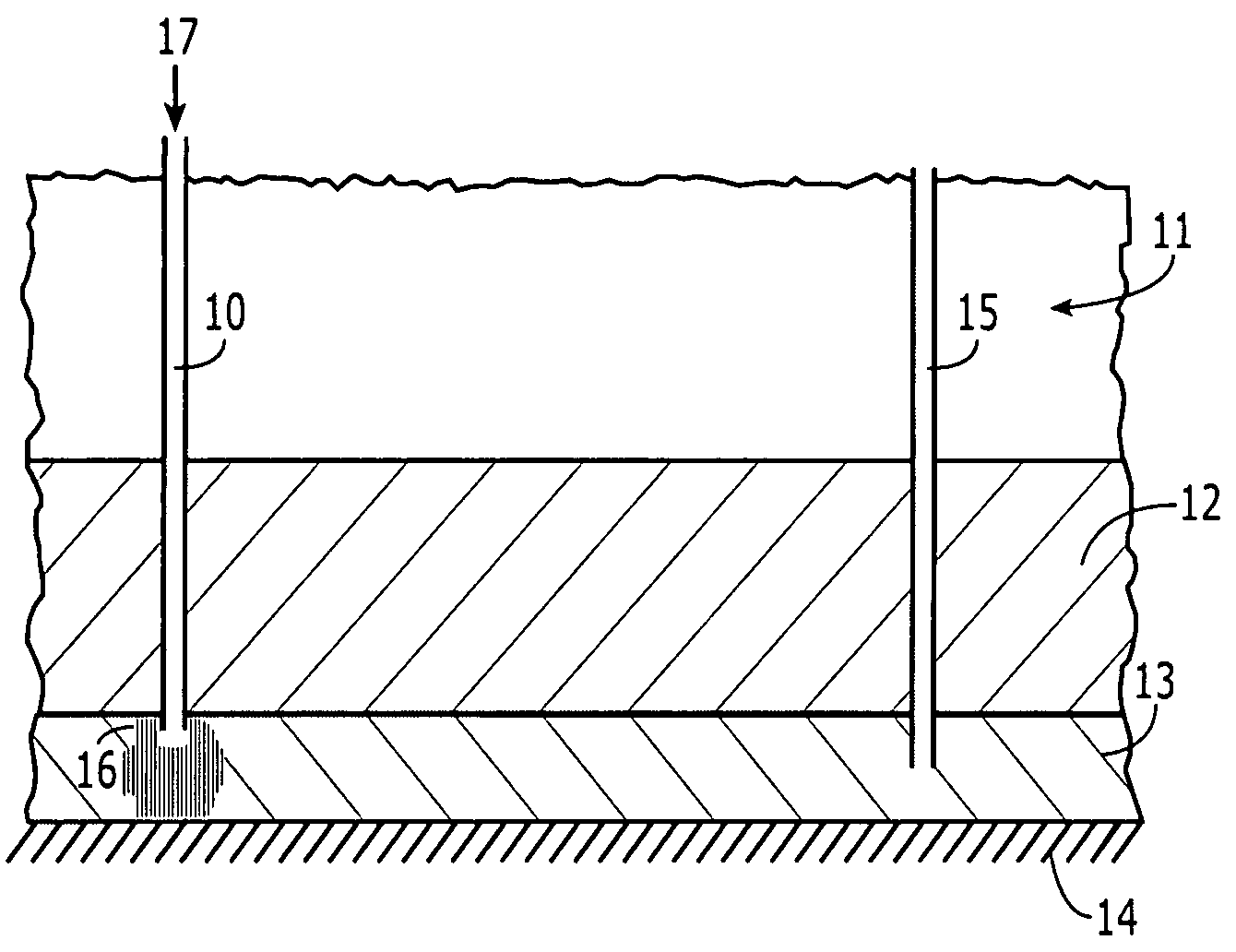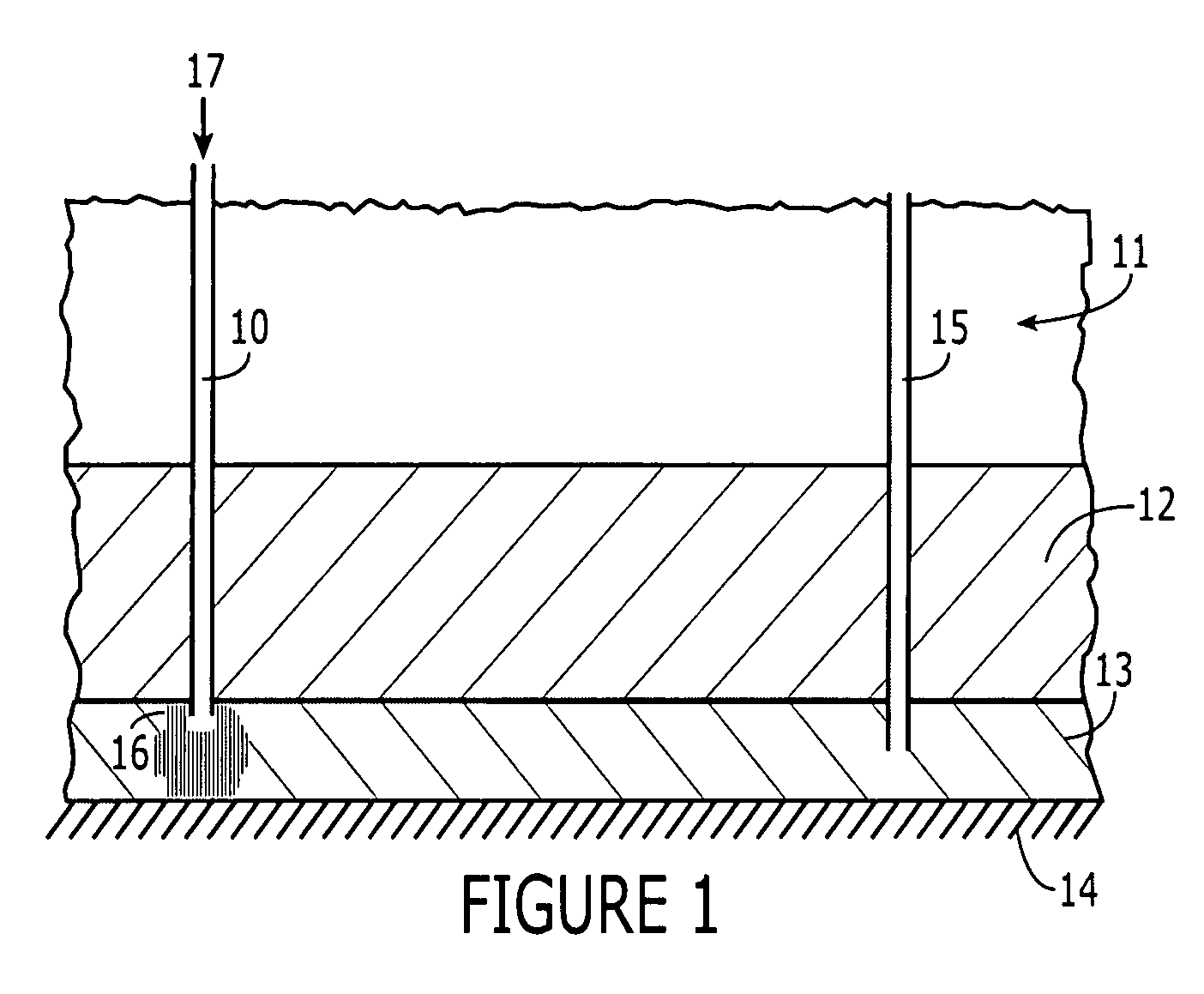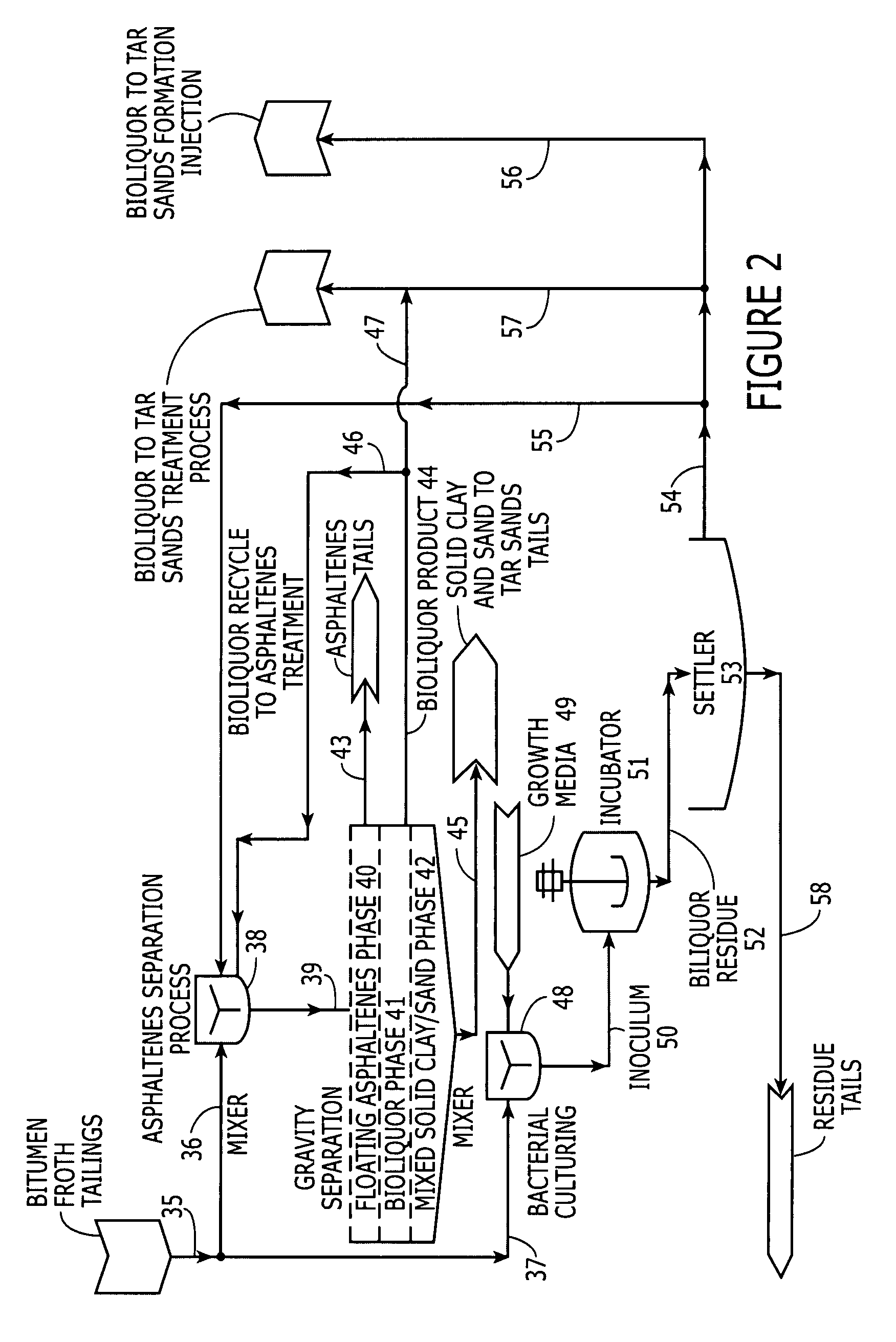Biological enhancement of hydrocarbon extraction
a hydrocarbon extraction and biotechnology, applied in the field of microbial enhanced hydrocarbon extraction, processing and recovery, can solve the problems of contaminating nascent surface water, groundwater, sediments, soil, and residual paraffins for years, contaminating water runoff, and high percentage of hydrocarbons which cannot be readily separated using conventional technologies. to achieve the effect of reducing processing costs
- Summary
- Abstract
- Description
- Claims
- Application Information
AI Technical Summary
Benefits of technology
Problems solved by technology
Method used
Image
Examples
example 1
[0044]An oil / water / sediment separation flotation test commonly used within the petroleum industry was used to compare hot water extraction of oil sands with and without the prior incubation of a microbial consortium. In comparison to uninoculated controls, samples of oil sand deposits treated with microorganisms demonstrated a 50% improvement in separation efficiency following a four hour treatment and a seven fold increase following a 24 hour incubation time. As seen in reference to FIG. 3, the amount of petroleum residue remaining in association with the sand decreases while the recovered oil product (“Froth”) as measured by the amount of bitumen (grams) recovery increases.
example 2
[0045]Separation efficiency of hydrocarbons from bituminous oil sands (Canadian Athabasca tar sands) was also demonstrated by comparing hydrocarbon separation in flasks containing oil sands. Control flasks had no amendments except growth media added while experimental flasks had the BioTiger™ microorganisms in media introduced to the flask. To inoculate the tar sands 106 cells BioTiger™ from a growing culture were needed per gram of tar sands for 24 hours. Constant agitation was performed on both flasks for the entire 24 hrs. Following a treatment interval of 24 hours, visual evidence established that hydrocarbons were being separated from the sand substrate in the BioTiger® containing flask. These types of flask conditions mimic below ground conditions where flooded oil fields from a secondary removal process can be treated with the BioTiger™ consortium to bring about additional release of oil from the substrate. The agitation and flushing action of injected steam and / or water can ...
example 3
[0046]As set forth in FIGS. 4A & 4B, the BioTiger™ microorganisms demonstrate metabolic activity when introduced into the oil sands. As seen from the evolved CO2 gases from inoculated samples, metabolic activity reflects active growth and metabolism of the BioTiger™ organisms. Light microscopy studies verify that the BioTiger™ organisms attached to the oil sands. While not wishing to be limited by theory, conventional thinking within petroleum recovery efforts using microorganisms suggest that the ability of the organisms to attach to the substrate is important in the subsequent release of oil from the formations using the combination of naturally produced surfactants as well as dislodging of oil particles created by the physical growth and colonization of the substrate by the microorganisms. The data set forth in FIGS. 4A and 4B demonstrates that the organisms are able to metabolize the oil present in the oil sands. Treatment conditions were at 65° C. and 30° C. without any nutrien...
PUM
 Login to View More
Login to View More Abstract
Description
Claims
Application Information
 Login to View More
Login to View More - R&D
- Intellectual Property
- Life Sciences
- Materials
- Tech Scout
- Unparalleled Data Quality
- Higher Quality Content
- 60% Fewer Hallucinations
Browse by: Latest US Patents, China's latest patents, Technical Efficacy Thesaurus, Application Domain, Technology Topic, Popular Technical Reports.
© 2025 PatSnap. All rights reserved.Legal|Privacy policy|Modern Slavery Act Transparency Statement|Sitemap|About US| Contact US: help@patsnap.com



